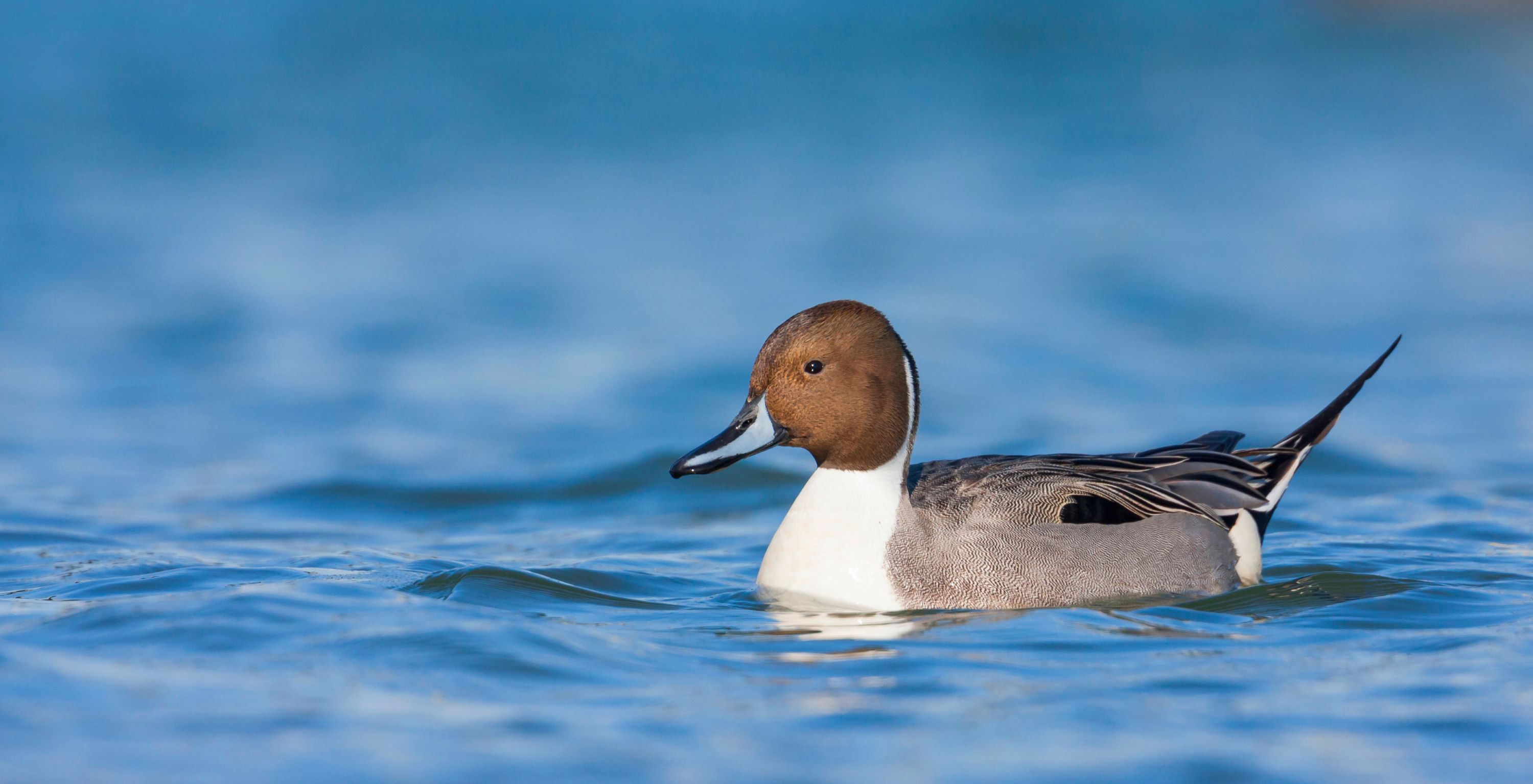
Anatidae: Ducks, Geese, and Swans
The family Anatidae, encompassing a diverse array of waterfowl, includes well-known species such as ducks, geese, and swans, each uniquely adapted to aquatic life. This family is characterized by distinct physical features ideal for their habitats, which range from serene ponds and marshes to expansive lakes and rivers globally. Members of Anatidae typically possess broad, flat bills designed for efficient foraging, webbed feet that enable proficient swimming, and waterproof plumage, which aids in buoyancy and insulation. This family showcases a remarkable range in size and morphology, from the nimble teal to the majestic and large-bodied swan, each species playing a critical role in its specific ecological niche.
Geese and swans, the larger members of the Anatidae family, are renowned for their impressive migratory behaviors and strong family bonds. Swans, with their elegant demeanor and often monogamous pairings, are iconic figures in many cultures, symbolizing grace and fidelity. These large birds gracefully navigate water bodies, feeding on aquatic vegetation with their elongated necks. Geese are recognized for their structured V-formation flights during long-distance migrations, a behavior that conserves energy and enhances group cohesion. Both geese and swans engage in intricate nesting practices, typically near water, and demonstrate strong parental instincts, with both sexes involved in nurturing their young.
The ecological impact of the Anatidae family is significant. Through their feeding habits, these birds influence aquatic vegetation and invertebrate populations, contributing to the balance of their ecosystems. Their migratory journeys play a crucial role in the dispersal of plant seeds, connecting diverse ecological regions. However, the preservation of these species is closely linked to the health of their habitats, currently threatened by human activities, pollution, and climate change. Protecting and conserving the Anatidae family is vital, not only for the survival of these fascinating birds but also for maintaining the ecological integrity of the world's wetlands and waterways. Their continued existence serves as an indicator of environmental health, underscoring the importance of wetland conservation in sustaining global biodiversity.
Subfamilies
Within the Anatidae family, a rich tapestry of subfamilies presents a fascinating diversity of waterfowl species. The Anatinae subfamily, commonly known as dabbling ducks, includes species like the mallard and teal, adept at feeding on the water surface or foraging in shallow waters. The Aythyinae subfamily, or diving ducks, comprises ducks like the canvasback and redhead, specialized in diving for their food. The Anserinae subfamily, encompassing geese and swans, is known for larger birds with longer migration patterns and strong family bonds. The Merginae subfamily includes sea ducks and mergansers, birds well-adapted to coastal environments and skilled in fishing. Lastly, the Stictonettinae, with the singular Freckled Duck, and the Tadorninae, featuring shelducks and sheldgeese, showcase unique adaptations to their specific ecological niches. Each of these subfamilies contributes uniquely to the ecological dynamics of their environments, showcasing the adaptability and diversity of the Anatidae family.
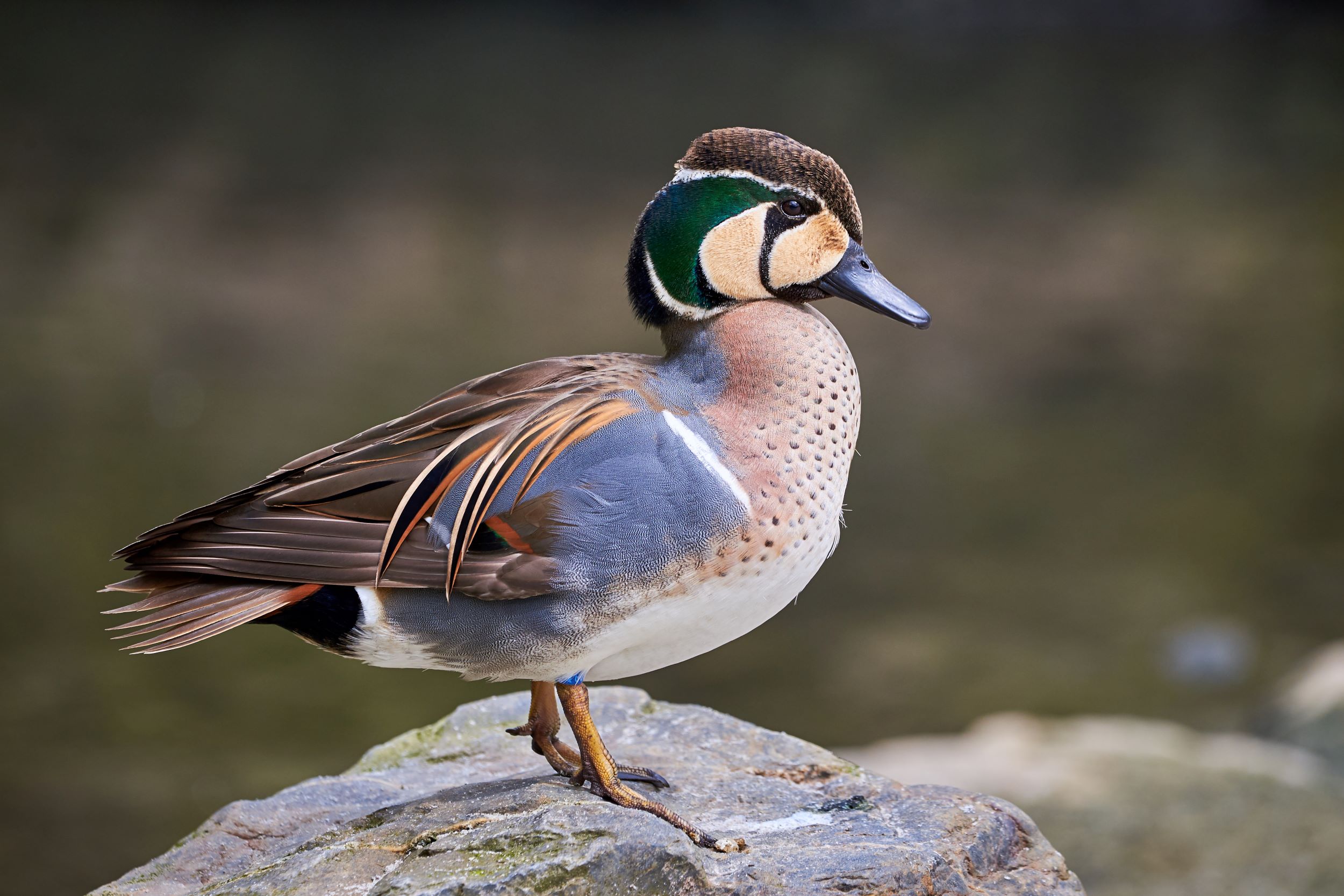
Anatinae
The Anatinae subfamily, commonly referred to as dabbling ducks, represents a diverse and widespread group within the Anatidae family. This subfamily includes many familiar species such as mallards, teals, pintails, and wigeons. Dabbling ducks are characterized by their unique feeding behavior – they forage primarily at the water's surface or by tipping forward to graze on underwater plants, hence their name. This behavior contrasts with that of diving ducks, which feed by diving underwater. Anatinae members have broad, flat bills with fine, comb-like structures called lamellae that enable them to filter food from the water. Physically, they are generally medium-sized birds with proportionate bodies and long, broad wings, which facilitate swift and direct flight. Their legs are centrally located on their bodies, aiding in walking and foraging on land, a feature that differentiates them from diving ducks whose legs are positioned further back. The plumage of dabbling ducks varies widely across species, often with striking sexual dimorphism; males typically display brighter and more elaborate plumage than females, especially during the breeding season.
In terms of ecology and behavior, Anatinae ducks exhibit a range of fascinating traits. They are predominantly found in freshwater habitats such as marshes, rivers, and lakes, though some species also inhabit coastal brackish waters. During breeding season, many Anatinae species engage in intricate courtship displays, including vocalizations, head-bobbing, and aerial maneuvers. Nesting usually occurs in concealed locations on the ground near water, and the female is primarily responsible for building the nest and incubating the eggs. Dabbling ducks are known for their high reproductive output, often laying large clutches of eggs. The ducklings are precocial, hatching with their eyes open and covered in down. They are capable of leaving the nest and feeding themselves shortly after hatching, although they remain under maternal care for protection and guidance. The Anatinae subfamily plays a crucial role in their ecosystems, not only as predators of aquatic insects and consumers of vegetation but also as prey for larger animals. Their migratory patterns contribute to ecological connectivity across regions, and their widespread distribution makes them important indicators of environmental health. However, like many waterfowl, they face threats from habitat loss, pollution, and hunting, making conservation efforts vital for their continued survival and the health of wetland ecosystems.
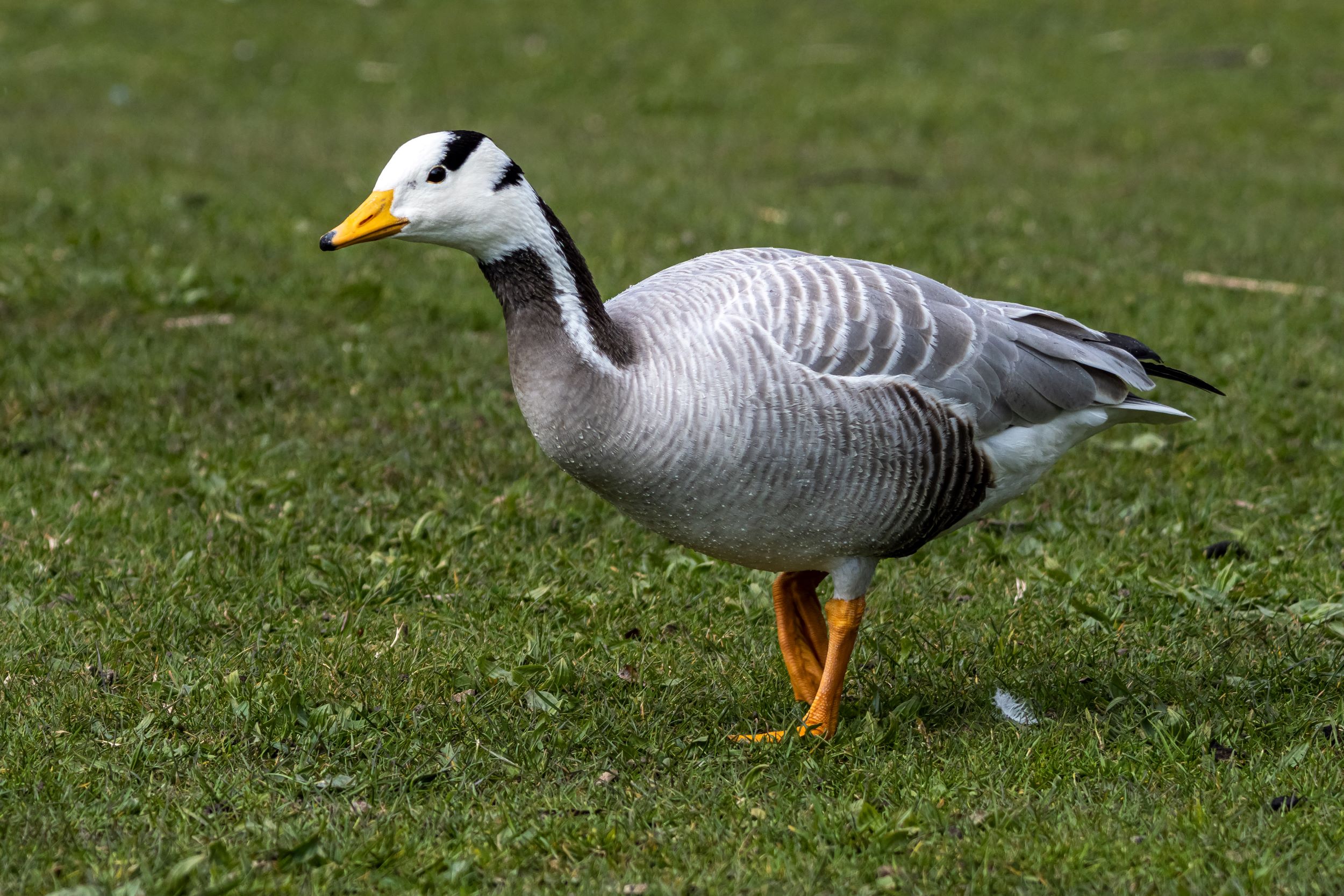
Anserinae
The Anserinae subfamily within the Anatidae family comprises geese and swans, two groups of waterfowl that are larger and generally more terrestrial than their duck relatives in the Anatinae subfamily. Geese and swans are distinguished by their long necks, large bodies, and strong, webbed feet, adaptations that enable them to forage in both aquatic and terrestrial environments. They are primarily herbivorous, grazing on grasses, aquatic plants, and grains, although some geese species may also feed on small insects and fish. The plumage of geese and swans tends to be less colorful than that of ducks, often displaying more muted tones of white, black, and gray, which provide camouflage in their open habitats. Swans are known for their graceful appearance and are larger than geese, with elongated necks and majestic postures. Geese, on the other hand, are smaller but still robust, and are particularly noted for their seasonal migratory behaviors, often flying in distinctive V-shaped formations that enhance their aerodynamic efficiency and conserve energy.
Behaviorally, the Anserinae subfamily exhibits strong social bonds and complex communication patterns. Both geese and swans are typically monogamous, forming long-term pair bonds that can last for many years, if not a lifetime. This monogamous nature is accompanied by elaborate courtship rituals that include synchronized calling, head bobbing, and mutual preening. Nesting is a significant aspect of their life cycle, with both swans and geese showing high levels of parental investment. They usually build large, sturdy nests near water bodies, and both parents share responsibilities in incubating the eggs and raising the young. The young, or cygnets and goslings, are precocial and are able to swim and feed themselves shortly after hatching, although they remain under the protection of their parents for several months. Geese, in particular, are known for their protective nature towards their offspring, often aggressively defending their young against perceived threats. Anserinae birds play a crucial role in their ecosystems, not only as grazers that help control vegetation but also as prey for larger predators. Their migratory routes and habits also contribute to the dispersal of plant seeds and the ecological connectivity between different regions. However, like many waterfowl species, they face threats from habitat loss, environmental pollution, and climate change. The conservation of wetland habitats and sustainable management practices are essential for the preservation of the Anserinae subfamily and the ecological balance of the environments they inhabit.
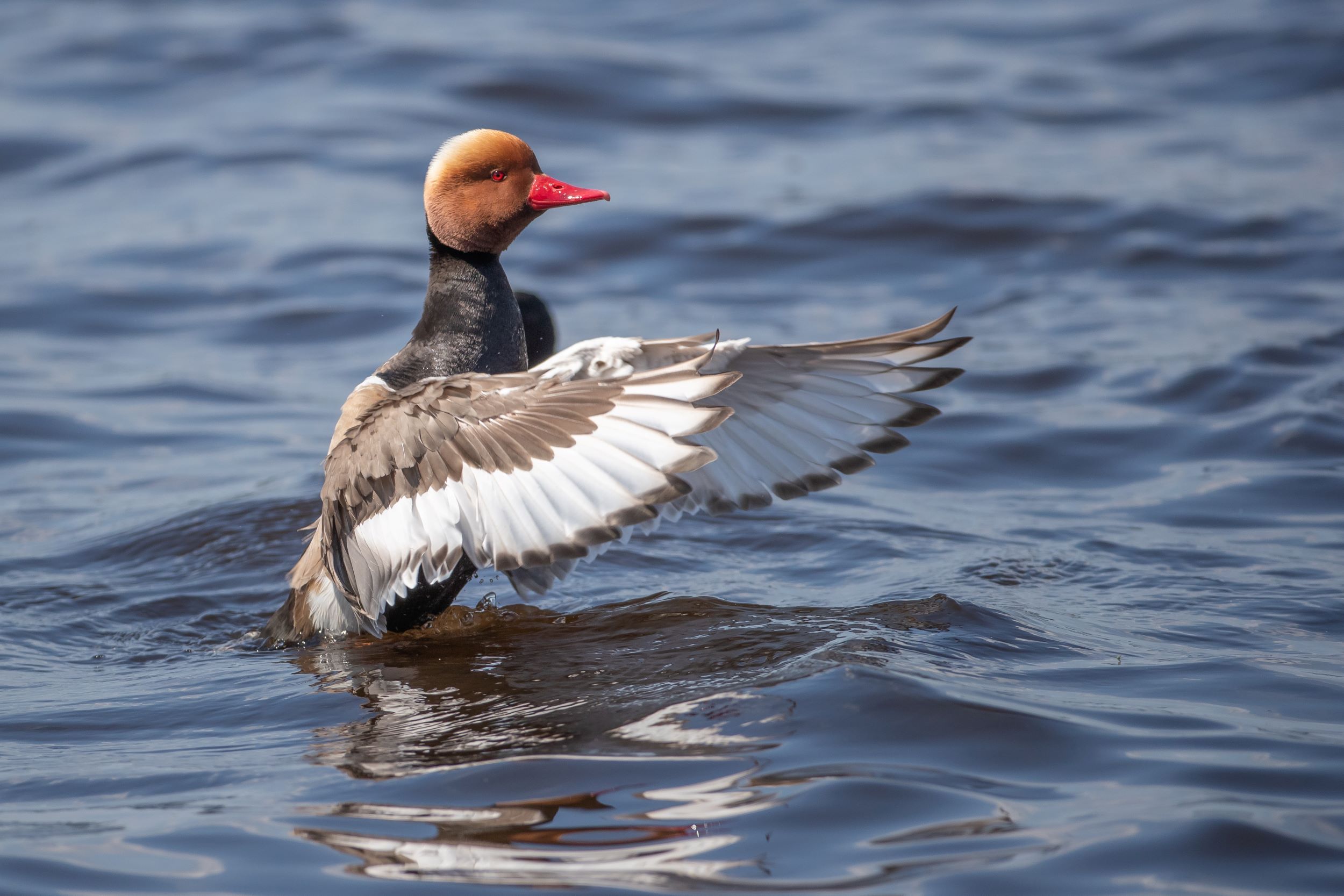
Aythyinae
The Aythyinae subfamily, part of the larger Anatidae family, comprises a group commonly referred to as diving ducks. This subfamily includes several species such as canvasbacks, redheads, pochards, and scaups. Unlike their Anatinae counterparts, Aythyinae ducks are adapted for diving and foraging underwater, a trait that significantly influences their physical attributes and behaviors. Diving ducks are generally characterized by their heavier, more compact bodies and larger feet positioned further back on the body. This anatomical arrangement enhances their ability to dive and swim underwater but makes them less agile on land compared to dabbling ducks. Their plumage tends to be more subdued in coloration, often featuring shades of brown, gray, and black, which provide camouflage in their aquatic habitats. Aythyinae beaks are typically broader and rounder than those of dabbling ducks, suited for a diet that includes a higher proportion of fish, crustaceans, and aquatic invertebrates, in addition to plant material.
Ecologically, diving ducks play a vital role in aquatic ecosystems. They contribute to the control of underwater vegetation and serve as important predators of aquatic invertebrates and small fish, thus maintaining ecological balance. Breeding and nesting habits of Aythyinae ducks vary across species but generally involve the construction of nests near or over water. Females usually take on the primary responsibility for incubating eggs and raising the young, with the males often leaving the breeding territory after mating. The chicks of diving ducks are precocial, emerging from the egg with a covering of down and capable of swimming and diving shortly after hatching. Conservation of Aythyinae species is crucial, as they face numerous threats including habitat degradation, pollution from agricultural runoff, and impacts from climate change. Wetland preservation and sustainable management of water resources are key to ensuring the survival of these ducks. Additionally, the study and monitoring of diving duck populations provide valuable insights into the health of aquatic environments, as these birds are often indicators of water quality and ecosystem integrity.
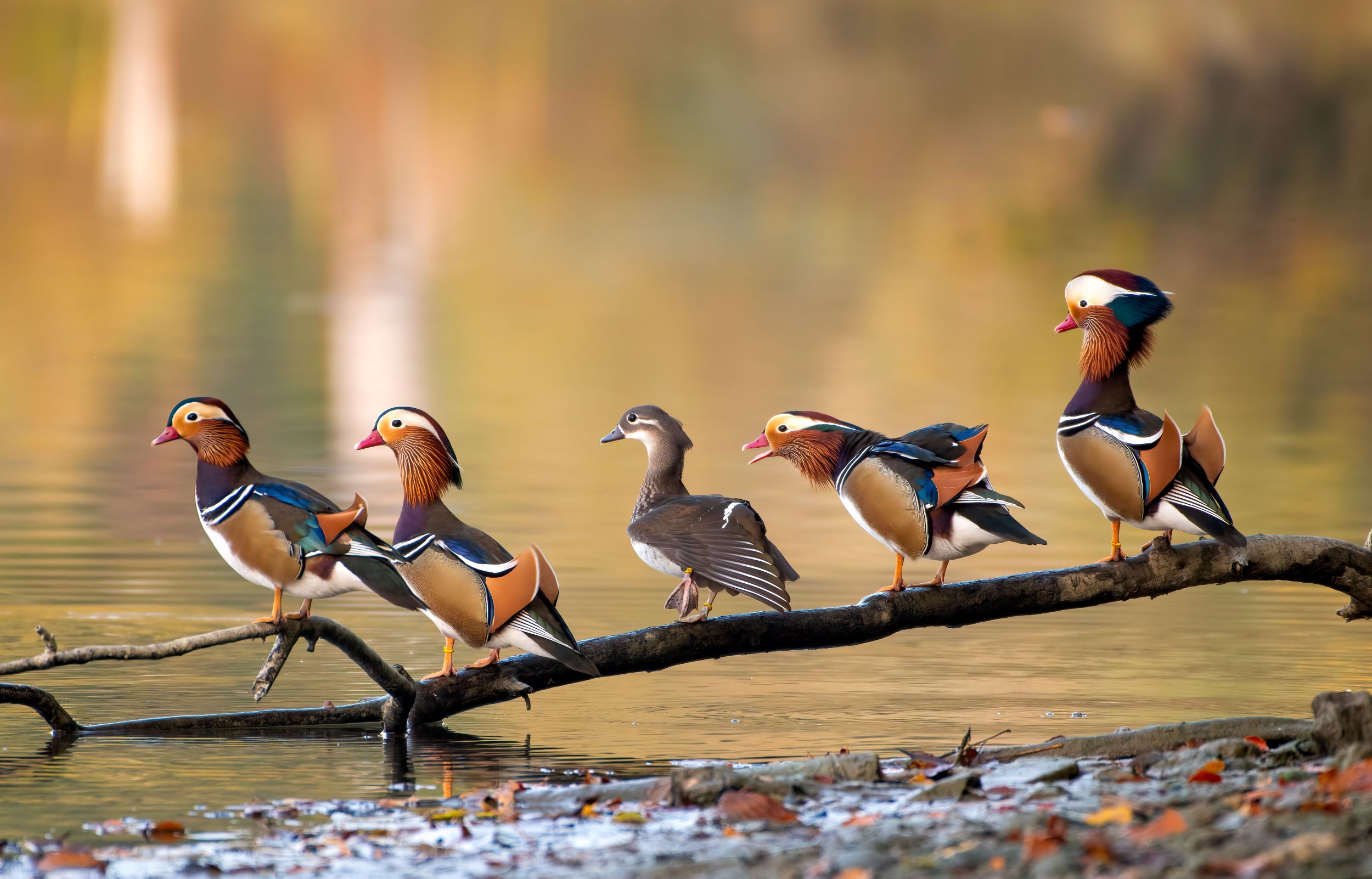
Cairinini
The Cairinini subfamily, nestled within the larger Anatidae family, is commonly referred to as the perching ducks. This group is distinguished by its members' unique ability to perch and nest in trees, a trait that sets them apart from other duck subfamilies. Perching ducks such as the Wood Duck and the Mandarin Duck are renowned for their strikingly vibrant plumage and elaborate patterns, making them some of the most visually captivating waterfowl. Their physical adaptations for arboreal living include strong, clawed feet and a more compact body structure, allowing them to navigate and grasp branches with ease. These adaptations enable them to exploit tree-based habitats, nesting in hollows or cavities, which offers protection from ground-based predators. Perching ducks typically have broad, square tails and relatively large wings, which aid in maneuvering through forested environments and provide the lift needed for taking off from water or land.
Behaviorally and ecologically, Cairinini ducks exhibit interesting traits. They are generally found in wooded swamps, marshes, and rivers, where their ability to perch in trees is advantageous. Their diet is diverse, comprising aquatic plants, seeds, insects, and small fish, reflecting their adaptability to various food sources available in their habitats. The courtship displays of perching ducks are particularly elaborate, involving vibrant plumage displays and intricate aerial acrobatics, which play a significant role in mate selection. In terms of nesting, the females usually lay their eggs in the tree cavities, and the ducklings, upon hatching, face the daunting task of leaping from the nest to the ground or water, a behavior that is remarkable for its precociousness. The conservation of perching ducks like the Wood Duck, once threatened by habitat loss and overhunting, has been a success story, showcasing effective wildlife management and habitat restoration efforts. However, continued conservation efforts are vital, as these birds' reliance on specific habitats makes them susceptible to environmental changes. Protecting wooded wetland ecosystems is crucial for the survival of the Cairinini subfamily, ensuring that these aesthetically stunning and ecologically important birds continue to thrive.
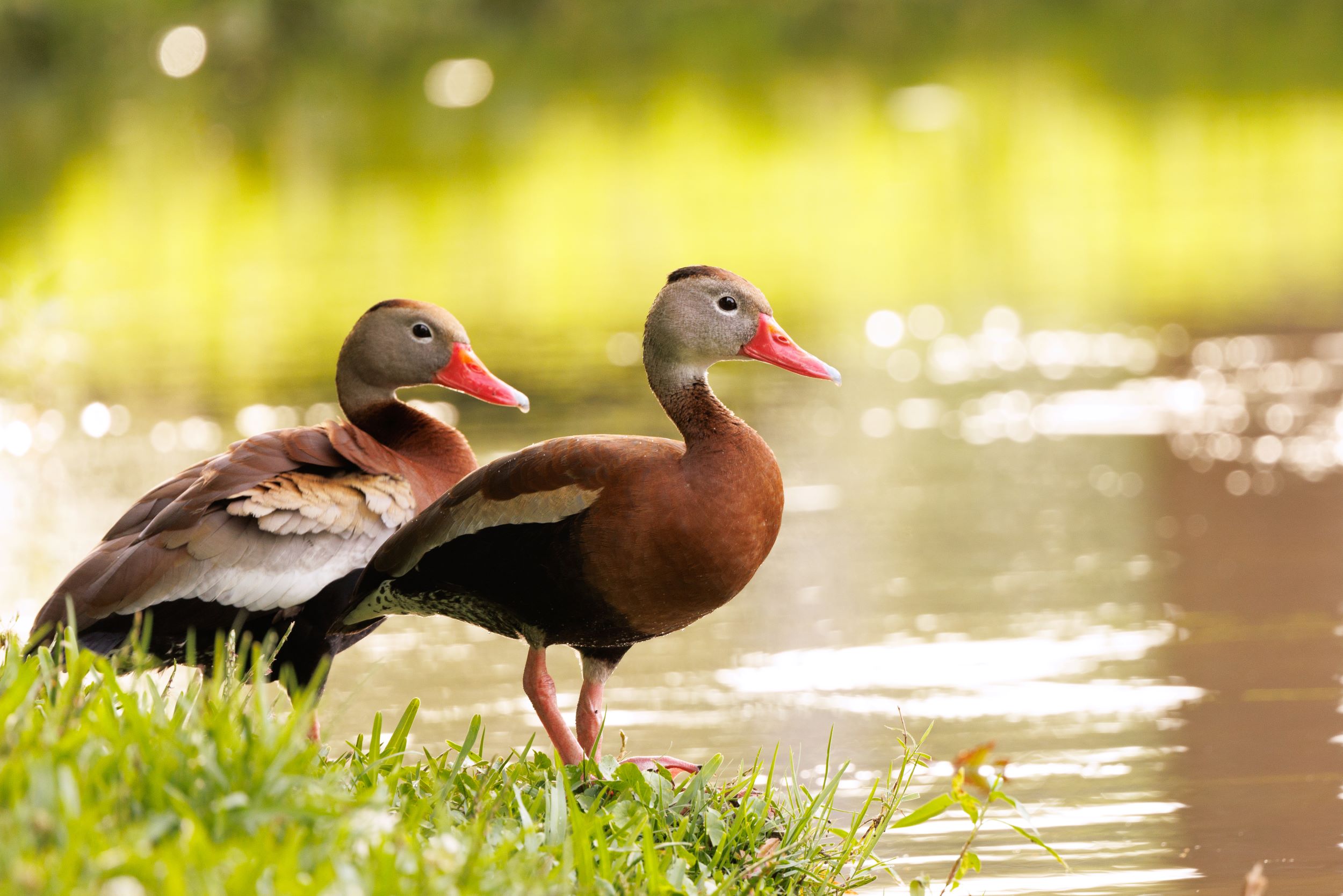
Dendrocygninae
The Dendrocygninae subfamily, a distinctive group within the Anatidae family, is commonly known as the whistling ducks or tree ducks. This subfamily is comprised of species that are notable for their elongated bodies, long legs, and necks, which lend them an appearance more akin to geese than typical ducks. Whistling ducks are named for their characteristic calls, which are melodious whistling sounds quite distinct from the quacks of other duck species. Physically, they exhibit a range of colors in their plumage, often with striking patterns of black, white, and chestnut. Unlike many waterfowl, Dendrocygninae species have claws that allow them to perch in trees, although they are not as adept at arboreal living as the Cairinini subfamily. They are often seen in flocks, especially during roosting and foraging, and tend to be more sociable compared to other duck species.
Ecologically, whistling ducks play a significant role in their habitats, which include wetlands, marshes, and tropical swamps. They are predominantly found in the warmer regions of the world, such as the southern United States, Central and South America, Africa, and Asia. Dendrocygninae species have a varied diet that includes seeds, grains, aquatic plants, and small invertebrates, which they forage both in water and on land. This diverse diet reflects their adaptability to different environmental conditions. Breeding behaviors among whistling ducks can vary, but many species exhibit strong pair bonds and share parenting duties. Nests are typically located in tree hollows or in dense vegetation near water, providing protection for the eggs and young. The chicks are precocial and are able to feed themselves shortly after hatching, though they remain under parental care for protection and guidance. Conservation of Dendrocygninae species is important, particularly in regions where wetland habitats are under threat due to human activities and climate change. Efforts to preserve and restore these habitats are crucial for the continued survival of whistling ducks, whose presence is often an indicator of the health of wetland ecosystems.
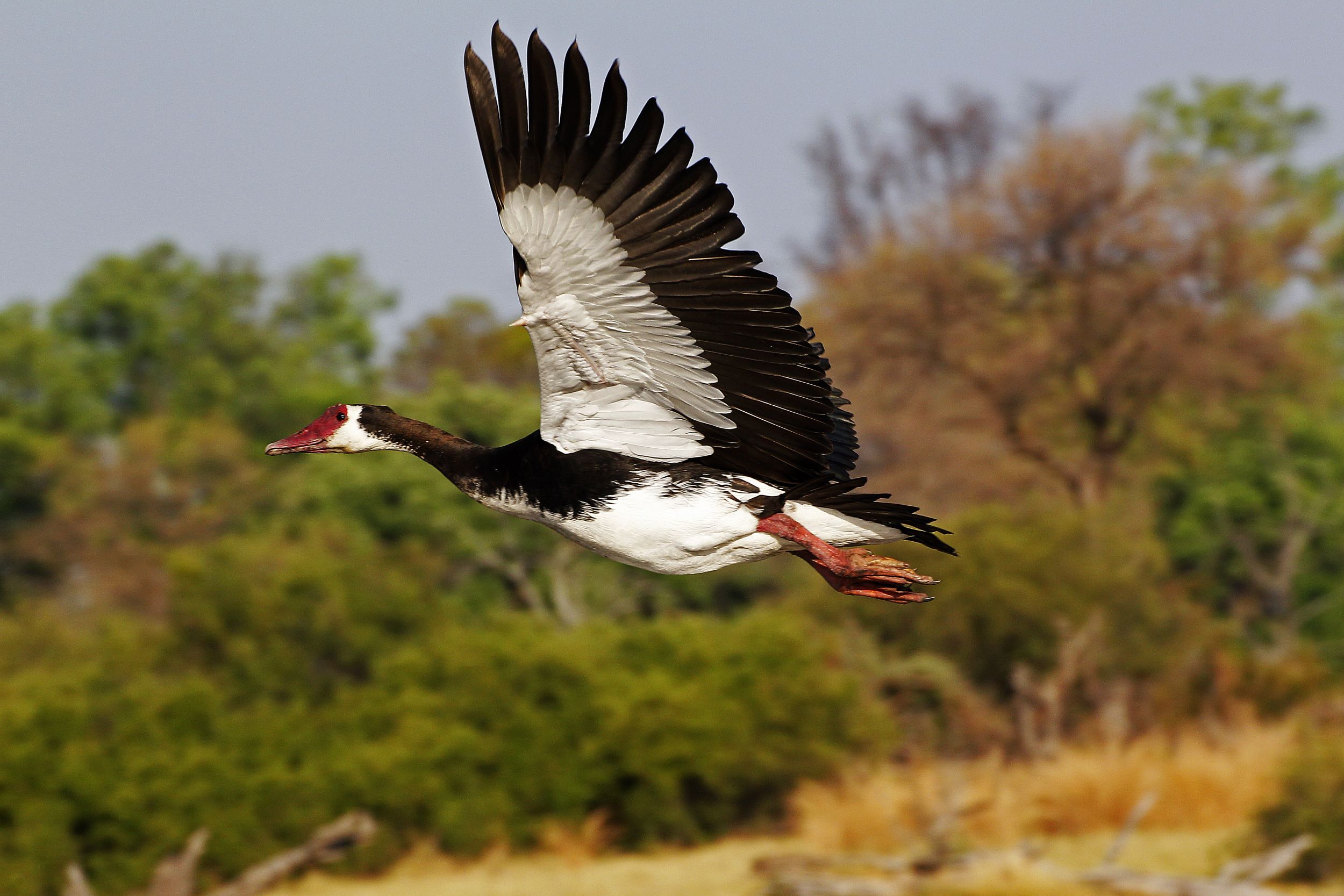
Plectropterinae
The Plectropterinae subfamily, a unique and small subset within the Anatidae family, is represented by a single species: the Spur-winged Goose (Plectropterus gambensis). This bird, native to wetlands across sub-Saharan Africa, is distinguished as the largest among the waterfowl, surpassing even some geese and swans in size. The Spur-winged Goose is characterized by its prominent size, with males reaching up to 15 kg (33 lbs) and having a wingspan that can exceed 2 meters (6.5 feet). Its plumage is predominantly black and white, with males typically having more pronounced black plumage. One of the bird's most notable features, as its name suggests, is the presence of prominent spurs on its wings. These spurs are used defensively and in territorial disputes. Another distinctive characteristic is its long, reddish-pink legs, which are well-adapted for its semi-terrestrial lifestyle. This bird spends a significant amount of time on land near water bodies, where it feeds on a diet that includes aquatic plants, seeds, and, occasionally, small animals like insects and small fish.
Behaviorally, the Spur-winged Goose exhibits fascinating traits. It is known for its gregarious nature, often found in flocks, especially during the non-breeding season. In breeding times, however, they can become more territorial and solitary. Their mating rituals involve elaborate displays, including vocalizations and wing-spreading to exhibit the spurs. Nests are usually constructed on the ground in dense vegetation, providing concealment and protection from predators. The female is responsible for incubation, while the male stands guard. The chicks are precocial and leave the nest soon after hatching, though they remain under parental care for several weeks. Conservation concerns for the Spur-winged Goose include habitat loss due to wetland drainage and agricultural expansion, as well as hunting for sport and consumption. Their presence in diverse aquatic ecosystems across Africa makes them important ecological indicators. Preserving the natural wetland habitats of the Spur-winged Goose is essential, not only for the species itself but also for the myriad of other wildlife that share and depend on these environments. The Spur-winged Goose, with its unique adaptations and behaviors, adds to the rich biodiversity of the African continent and plays a vital role in the ecological balance of its native regions.
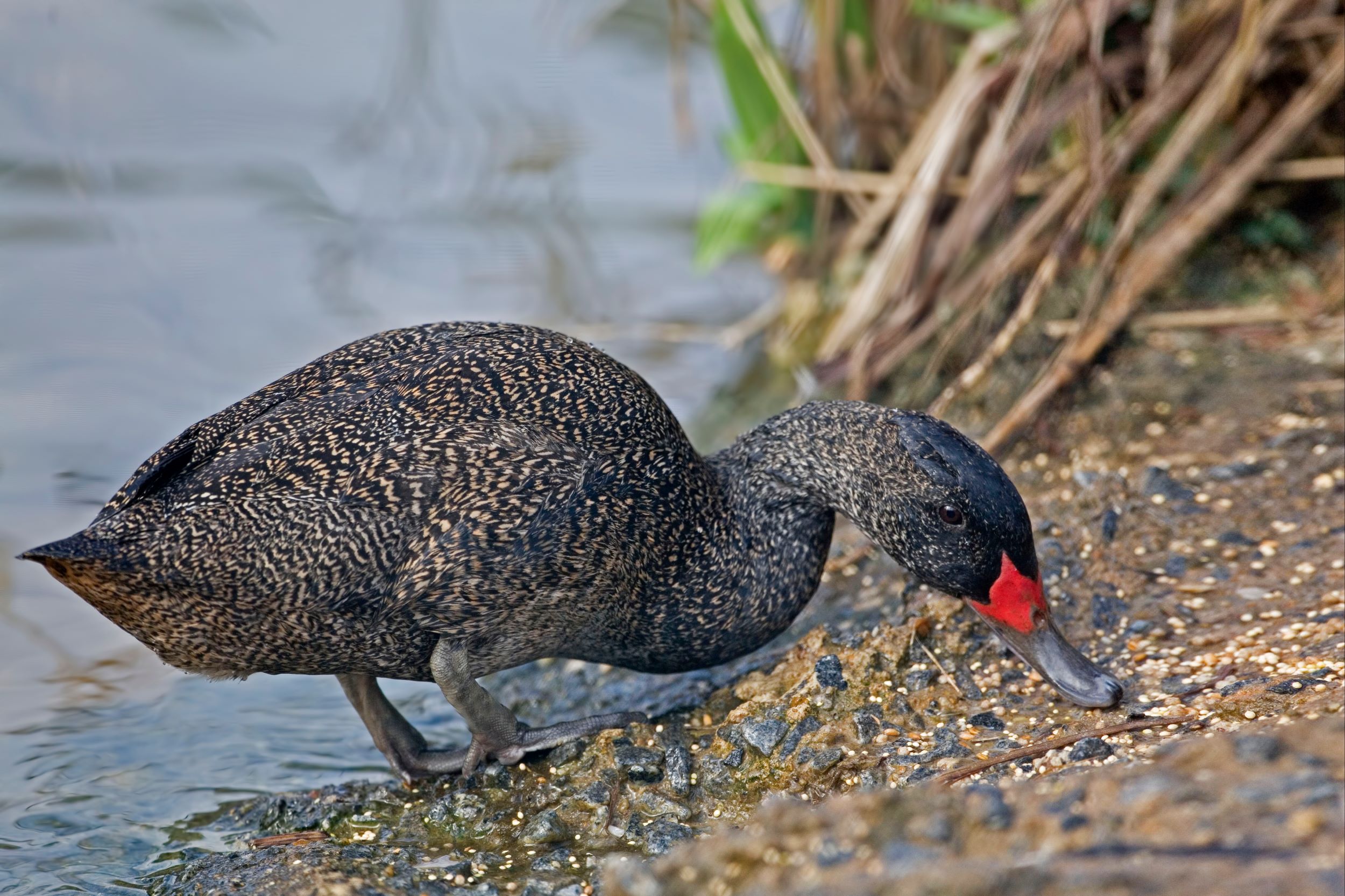
Stictonettinae
The Stictonettinae subfamily, a lesser-known branch of the vast Anatidae family, is intriguing in its composition, as it consists of only one species: the Freckled Duck (Stictonetta naevosa). Native to Australia, the Freckled Duck is a rare and somewhat enigmatic bird, distinguished by its subtle and understated appearance. It features a dark, grey-brown plumage that is speckled with fine white spots, giving rise to its common name. The bird's most distinctive physical traits include a broad, slightly upturned bill and large, brown eyes that confer a gentle expression. Adapted to life in freshwater environments, the Freckled Duck frequents swamps, marshes, and lagoons, especially those with abundant reed beds and other forms of dense aquatic vegetation. This habitat preference makes them elusive and often difficult to spot. Despite being classified as a duck, its behavior and morphology share some similarities with swans and geese, such as a more upright swimming posture and a preference for grazing on aquatic vegetation.
In terms of behavior and ecology, the Freckled Duck plays a specialized role in its habitat. It is predominantly herbivorous, feeding on a variety of aquatic plants, seeds, and occasionally invertebrates, which it forages with its uniquely shaped bill. The breeding habits of the Freckled Duck are somewhat opportunistic and closely linked to the availability of water, as breeding typically occurs following periods of heavy rainfall that create suitable wetland conditions. Nests are generally built close to the water amongst dense reed beds, providing concealment and protection. The female undertakes the responsibility of incubating the eggs, while the male often remains nearby. The chicks are precocial, hatching with a covering of down and capable of feeding themselves shortly after birth, although they remain dependent on their mother for protection and guidance during their early life. The conservation status of the Freckled Duck has been a concern, primarily due to habitat destruction and degradation, as well as droughts that impact their wetland habitats. Efforts to conserve and restore these vital ecosystems are crucial for the survival of this unique species. The Freckled Duck's rarity and distinctive characteristics make it an important species for biodiversity, and its well-being is a key indicator of the health of Australia's inland waterways.
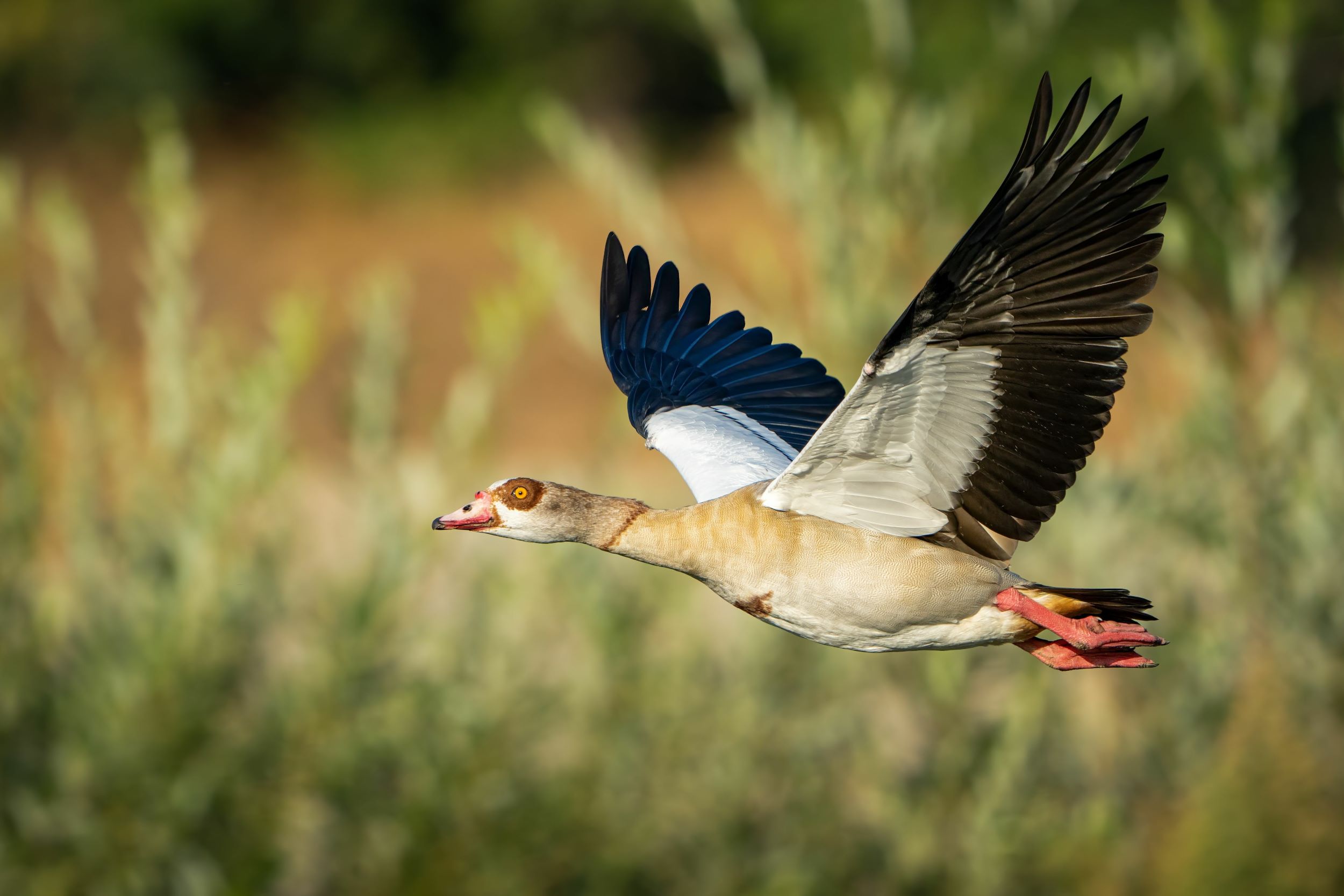
Tadorninae
The Tadorninae subfamily, part of the diverse Anatidae family, comprises a group commonly known as shelducks and sheldgeese. This subfamily is characterized by its members' distinctive and often striking appearance, combining features of both ducks and geese. Tadorninae birds are medium to large in size, with robust bodies and relatively long legs, enabling them to forage effectively both in water and on land. Their plumage is typically bold and colorful, featuring a mix of white, black, brown, and more vibrant hues, which makes them stand out among other waterfowl. For instance, the common shelduck has a conspicuous white body with a dark green head, a bright red bill, and chestnut and black markings, making it easily recognizable. Sheldgeese, such as the Ruddy Shelduck, display a more uniform coloration but are equally striking. These birds are found in a variety of habitats, including wetlands, estuaries, and open grasslands, across Europe, Asia, Africa, and Australasia. They typically prefer habitats near water but can also be found in more arid regions, as some sheldgeese species are well-adapted to life in steppe and high-altitude environments.
Behaviorally, Tadorninae species exhibit interesting traits and habits. They are generally monogamous, with pairs forming strong bonds often lasting many breeding seasons. During the breeding season, these birds engage in elaborate courtship displays, including vocal duets, head bobbing, and mutual preening. Nests are often located in secluded sites, such as in dense vegetation, hollow trees, or abandoned burrows, offering protection from predators. The females are primarily responsible for incubation, while males stand guard and defend the nesting territory. Tadorninae chicks are precocial, emerging from the egg relatively mature and mobile, and are quickly led to water by their parents. In their ecological role, shelducks and sheldgeese are important for maintaining the balance in their habitats, as they feed on a variety of plant and animal matter, including aquatic invertebrates, small fish, and vegetation. The conservation of Tadorninae species, like many waterfowl, faces challenges due to habitat loss, environmental pollution, and climate change. Their presence and status in the wild are indicators of the health of wetland and grassland ecosystems, making their conservation crucial for the overall health of these environments. The Tadorninae subfamily, with its unique blend of duck and goose characteristics, adds a significant layer of diversity to the waterfowl group and plays an essential role in the biodiversity of the regions they inhabit.